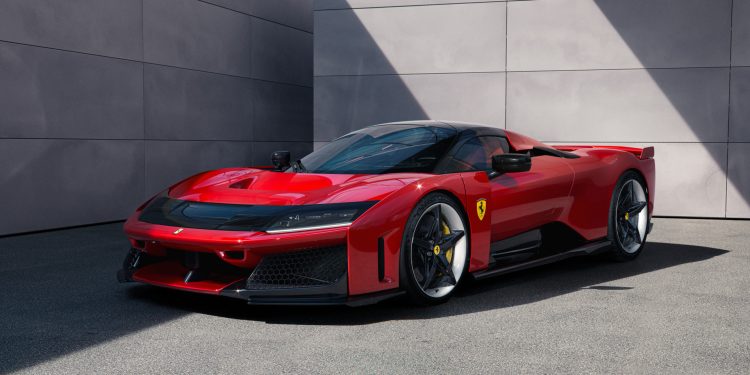Ferrari’s Once-in-a-Decade F80 Hypercar Is a Sell-Out
Words NZ Autocar | Images Ferrari
Ferrari has unveiled its F80 hypercar featuring a hybrid powertrain and advanced aerodynamics. A limited edition run of 799 units, each has an asking price of $NZ6.65m. And all are presold, sorry. Deliveries begin this time next year.
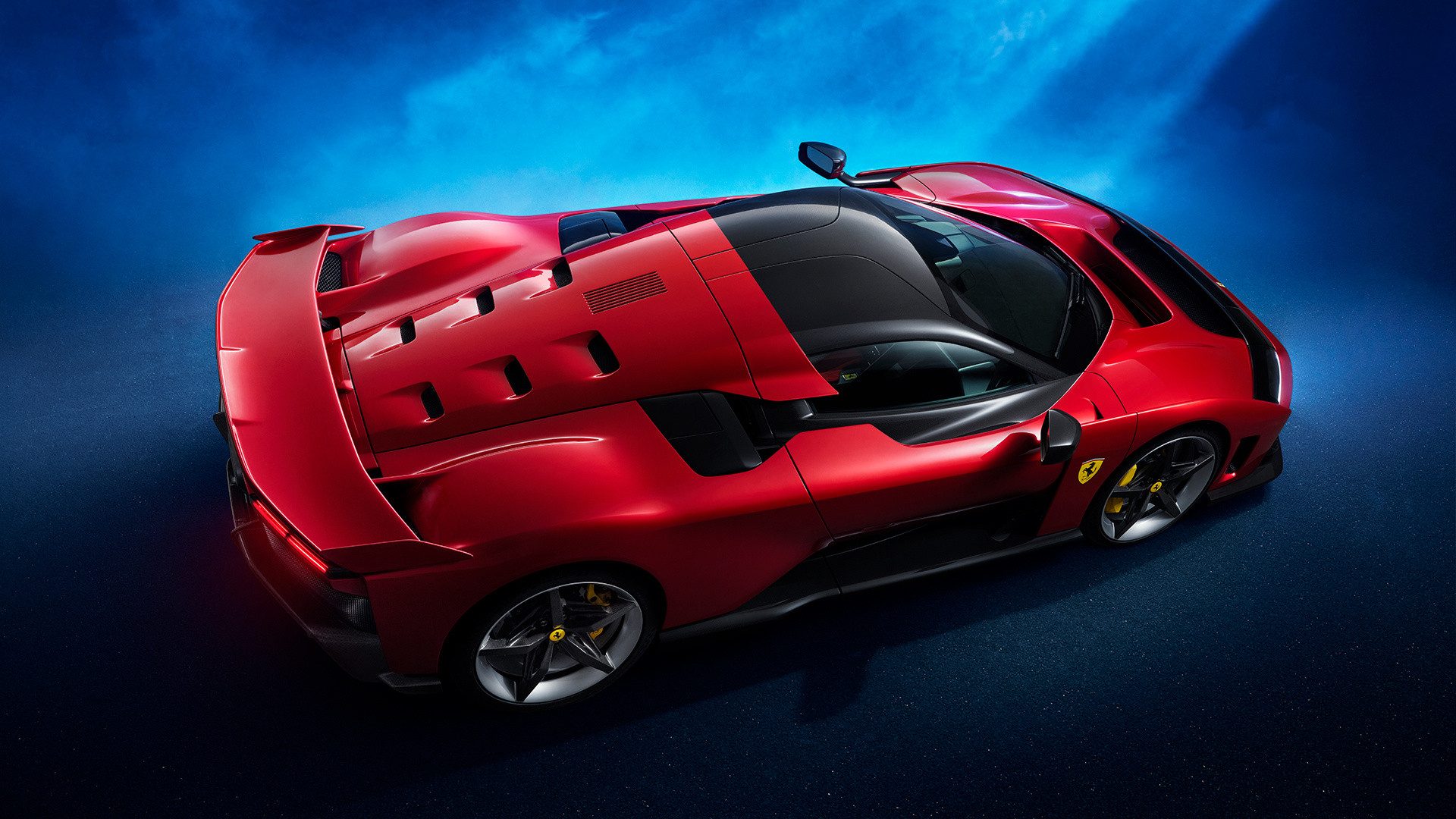
It features technology that is sure to be used in future production cars. The newcomer has a carbon fibre structure and mid-engined hybrid powertrain.
No V12 or V8 for F80
Ferrari says system power from its twin-turbo 3.0L V6 (shock, horror) and five motors is 882kW, three-quarters of it from ICE power.
The engine is largely the same as that used in the F1 and 499P endurance racers. It features a 9200rpm redline, and makes a noise that Ferrari says is akin to a mini V12.
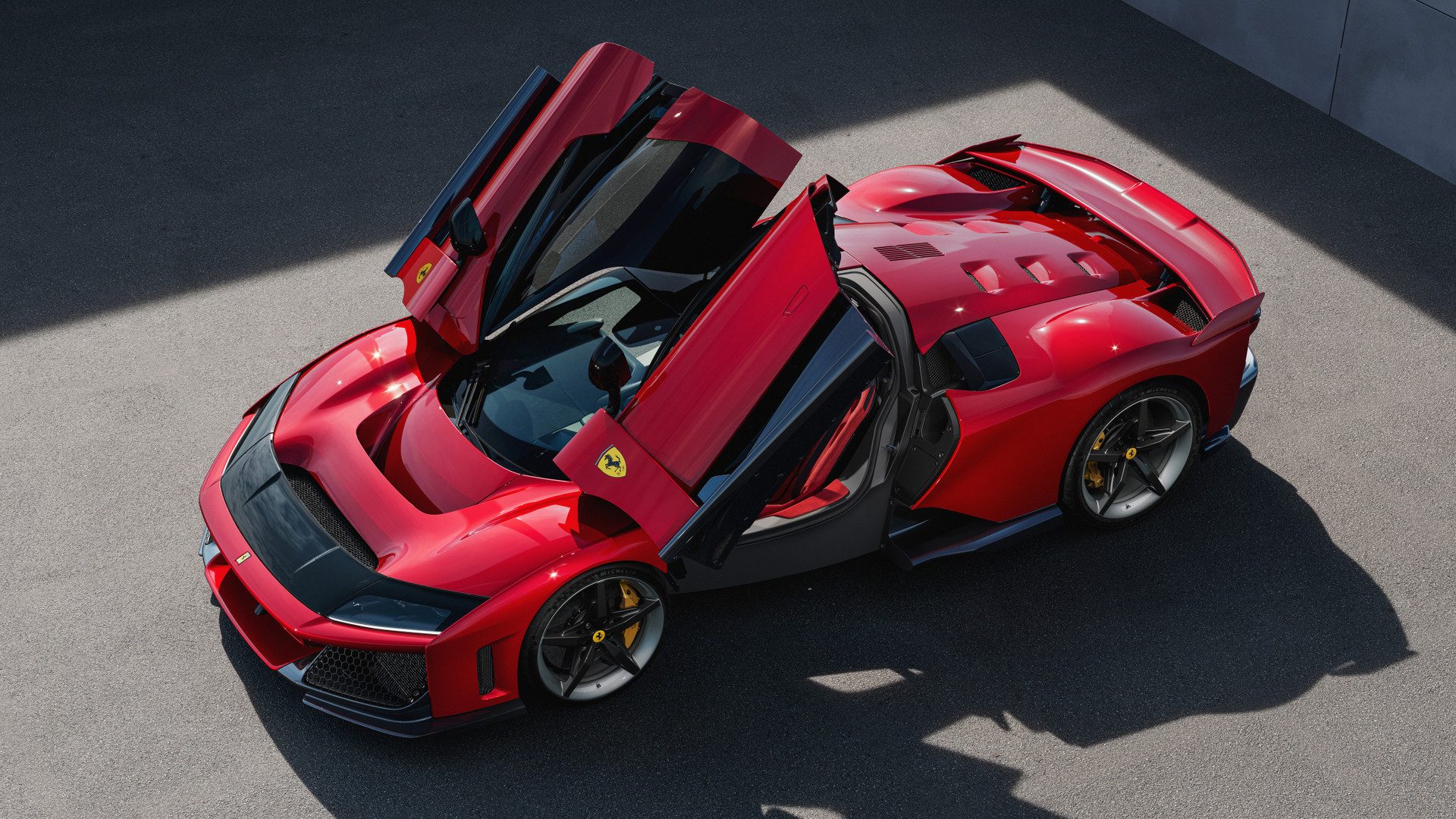
The turbos are both electrically assisted for improved throttle response. They also permit high boost pressures. Another small electric motor acts as a starter generator and provides torque infill at low revs. An eight-speed dual-clutch transmission on the rear axle processes the output.
The remaining pair of e-motors, each generating 104kW, mount to the front axle for all-wheel drive. Each powers an individual wheel, permitting active torque vectoring. The e-motors draw power from a lightweight 2.28kWh battery pack mounted behind the seats. It is self-charging via the engine and brake regeneration so there is no plug.
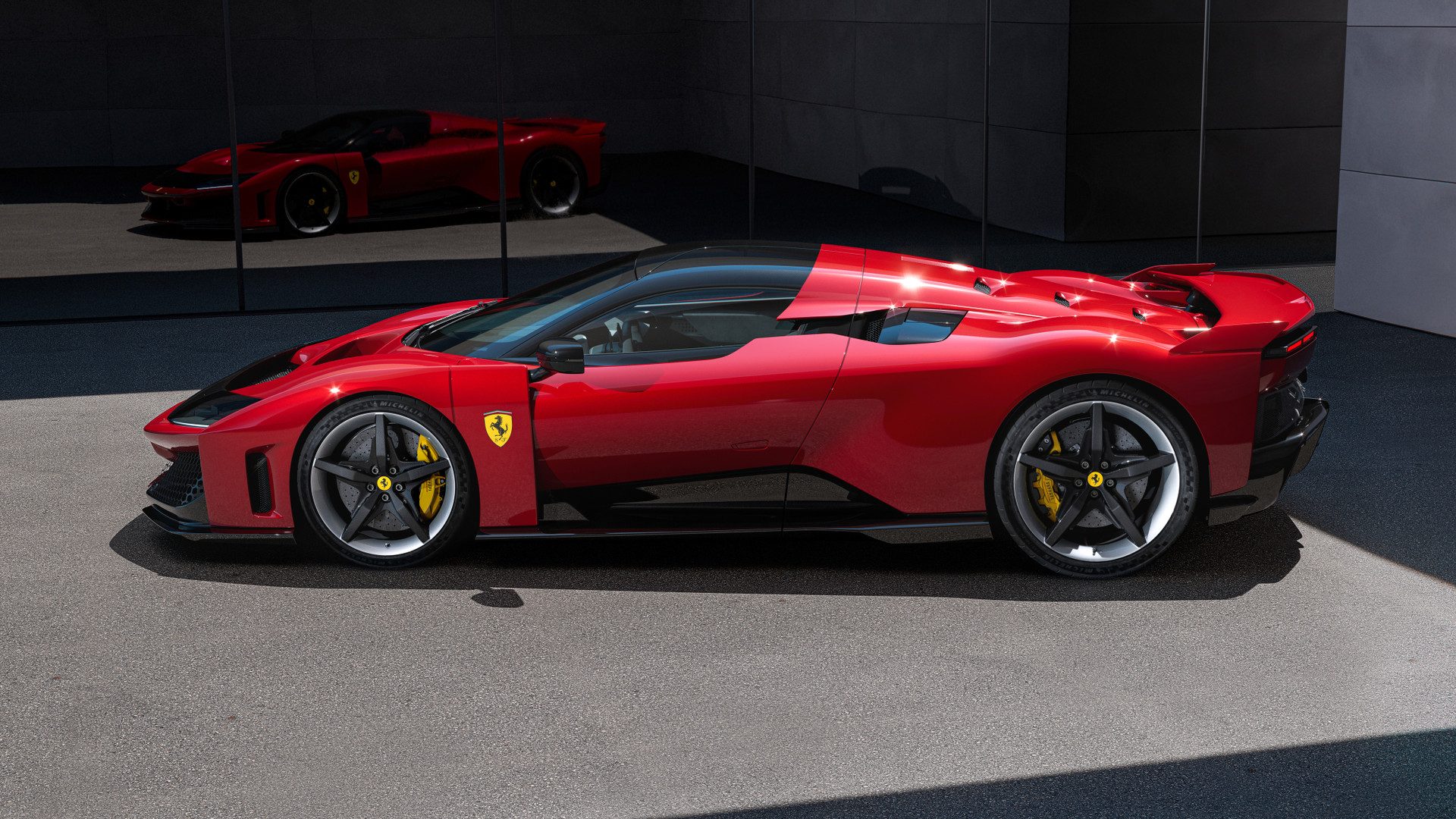
The F80 has a dry weight of 1525kg. Ferrari says it jets to 100 in just 2.15sec and cracks through 200km/h in 5.75sec. Top speed is limited to 350km/h.
McLaren’s new W1, by contrast, is more potent but not as quick, with a 0-100 time of 2.7sec.That’s explained by its rear-wheel drive configuration. However, it manages 0-200 in 5.8 seconds, so is no laggard.
Suspension and aero
A carbon fibre cell surrounds the cockpit and upper part of the engine compartment, while aluminium subframes provide support for the front and rear suspension.
The suspension is a pushrod configuration using 3D-printed suspension arms. The F80 also features fully active roll control by Canadian engineering firm, Multimatic. Four electric motors mounted on each of the suspension arms cancel out lateral body movement, and also control dive and pitch.
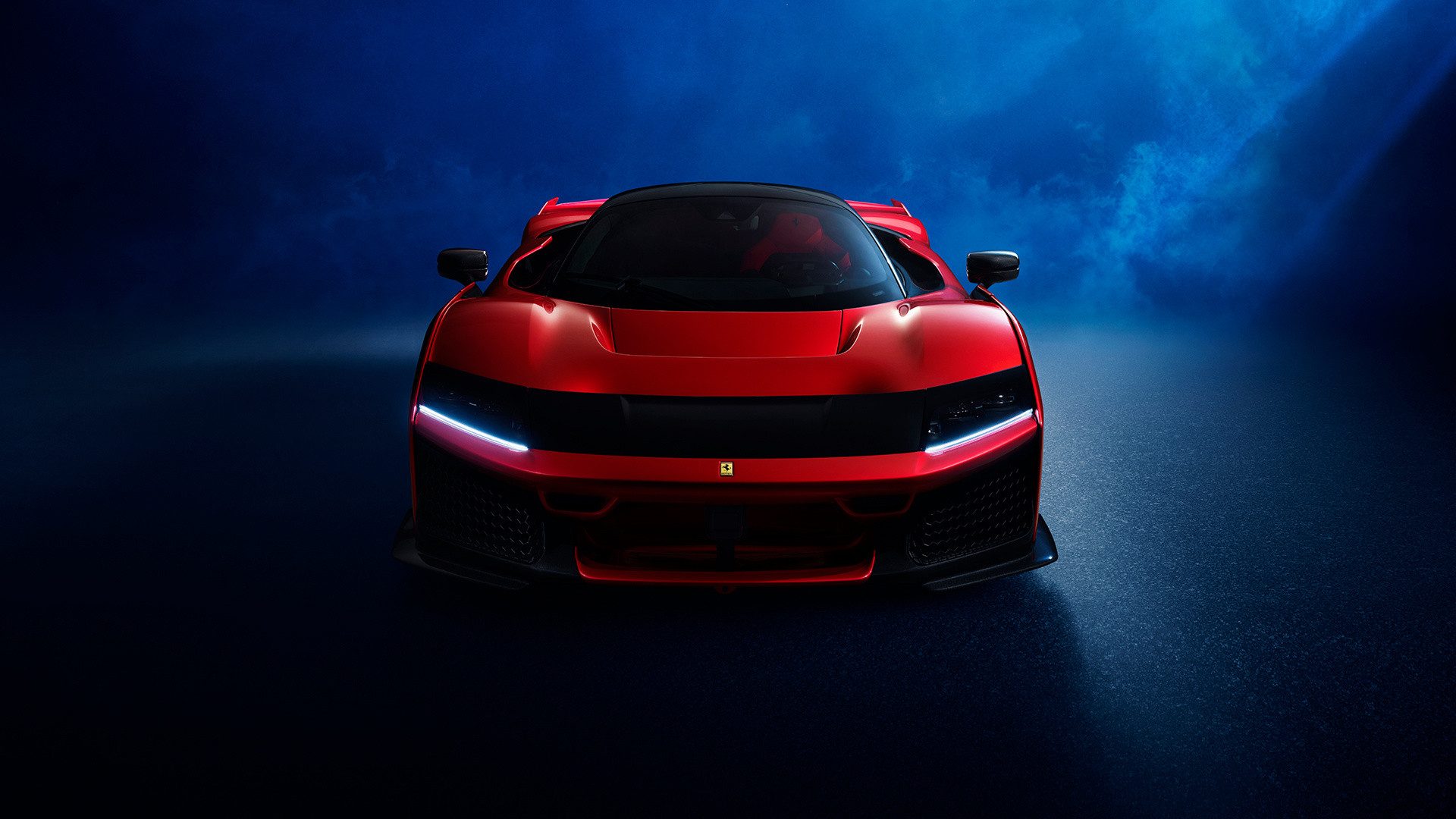
The aero package is capable of producing 1050kg of downforce at 200km/h, so the loads at each corner change depending on speed.
Underfloor air management and a huge active rear wing generate all that downforce. The driver’s feet are slightly elevated and the cockpit narrowed because of an aggressive aero duct up front. As a result, the driver and passenger seats are staggered and set inboard.
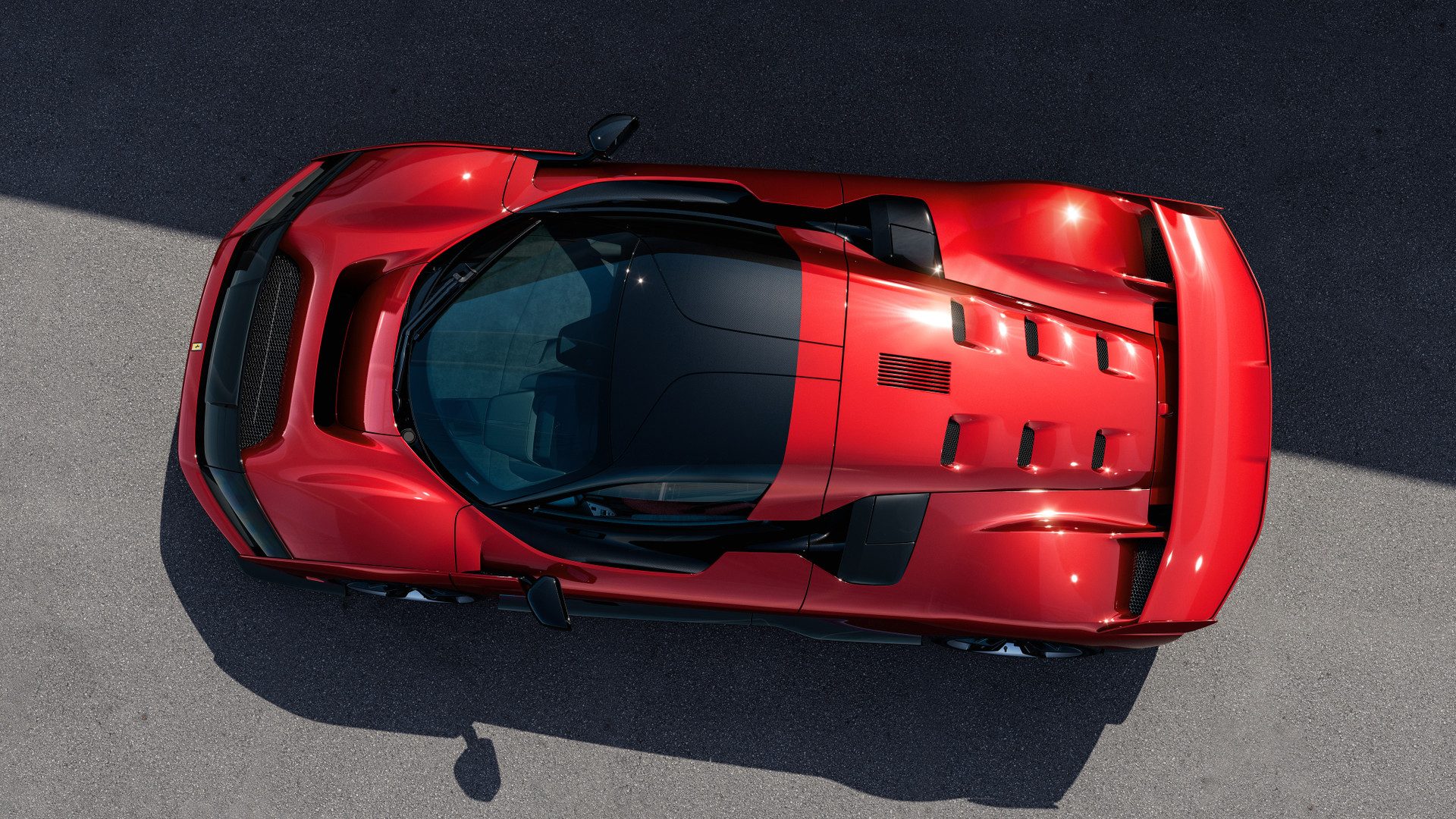
Brakes feature a CCM-R composite and Brembo six-piston calipers on the front axle. The 20- and 21-inch wheels are five-spoke carbon fibre units.
Design mixes old and new elements
A blocky design language is new for Ferrari, and features elements from past models. The nose has a black facia and hidden headlights. There’s a large aero opening at the centre and two outer intakes. The flat front wheel arches help to separate the air from the side and top surfaces of the car. NACA ducts sit either side of the cabin behind the two butterfly doors.
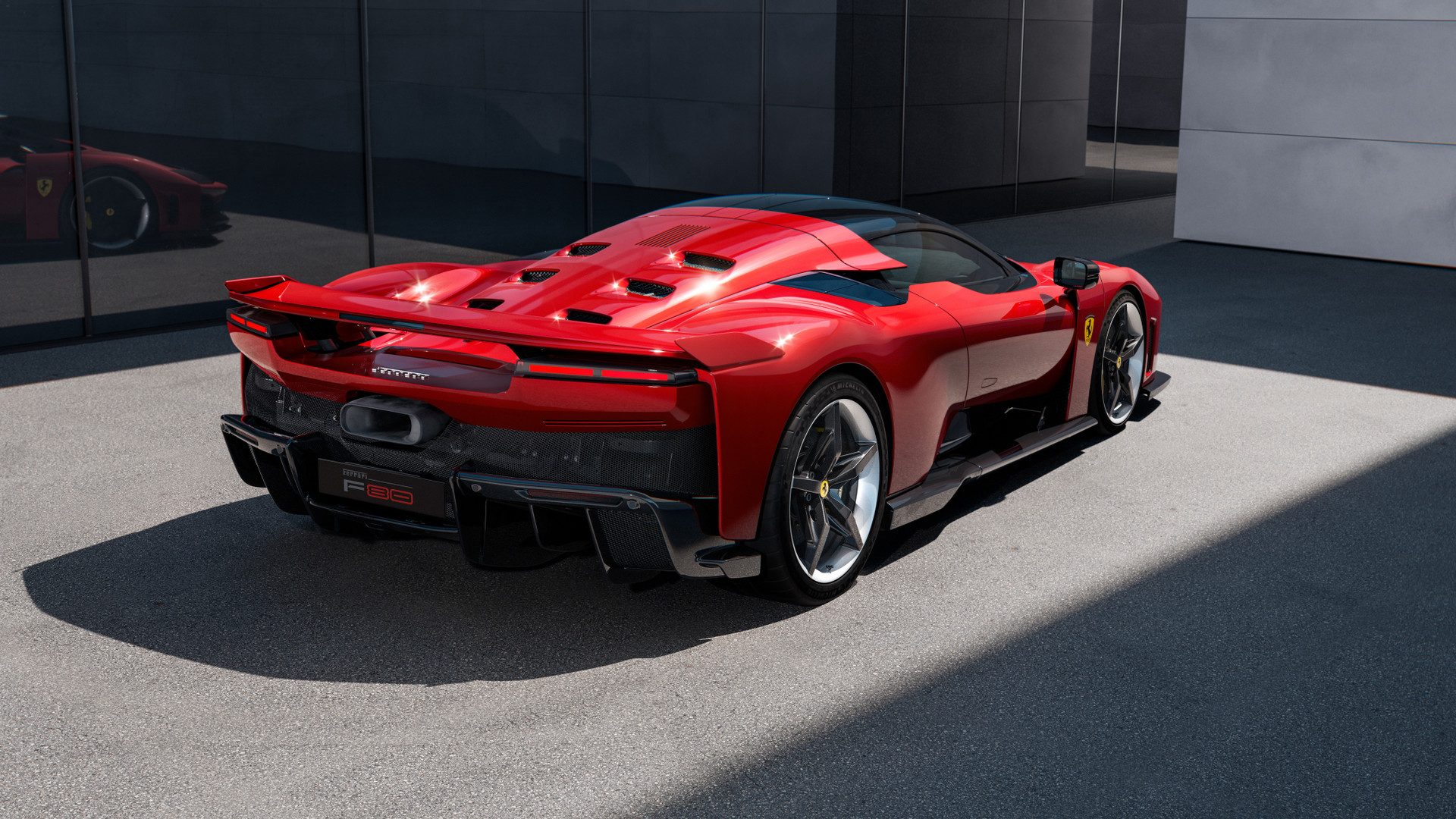
Inside is an asymmetrical dash layout that separates the driver and passenger, highlighted by a coloured driver’s seat. Instead of a primary instrument, a driver information display mounts directly to the steering column. F80’s steering wheel features physical buttons, a move away from haptics.
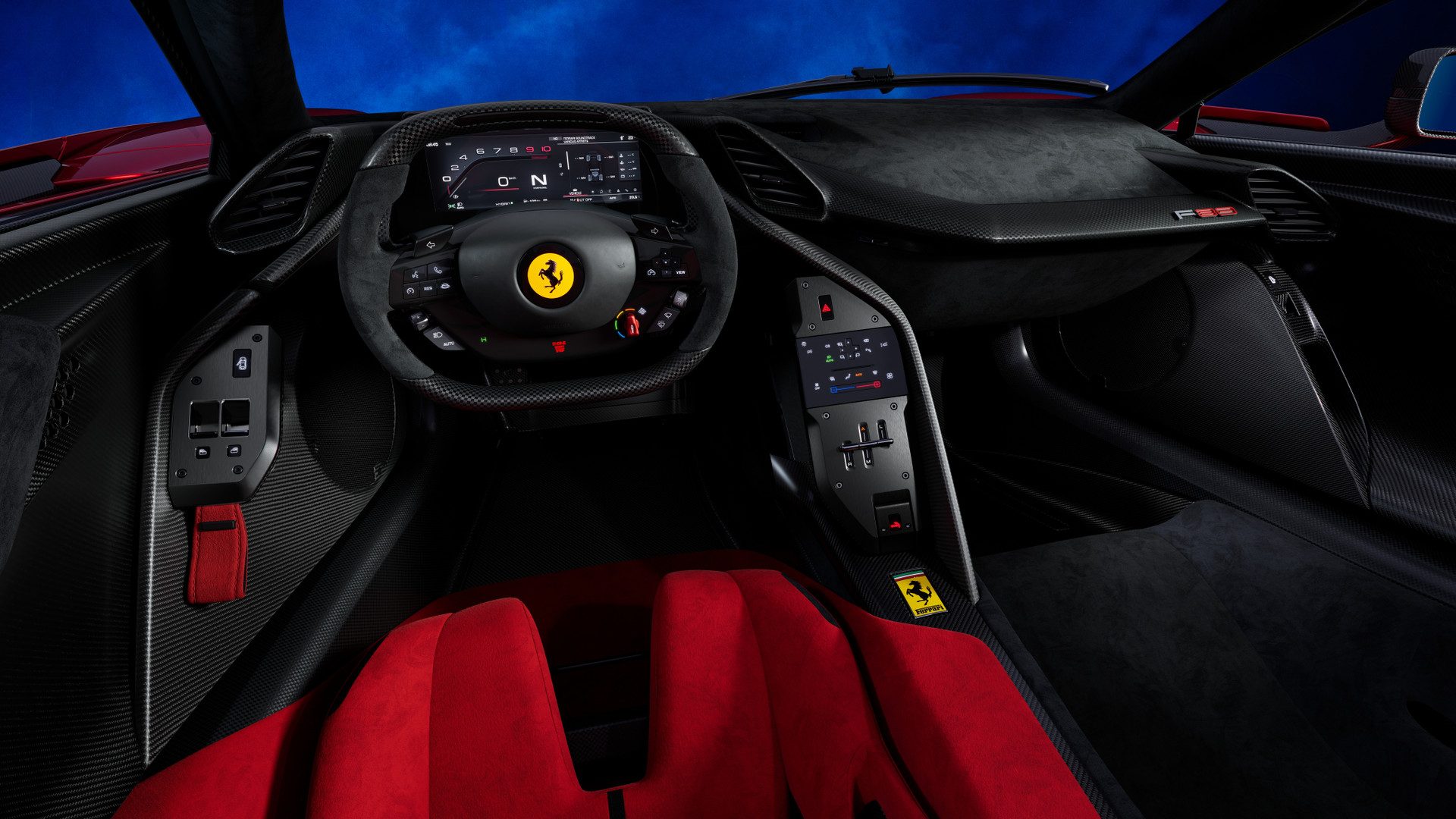
Why a V6?
Ferrari fans will no doubt be surprised at the lack of a V12 engine in the F80, or even a V8 like the W1 gets, especially given the Italian’s asking price.
Enrico Galliera, Ferrari’s chief marketing and communications officer, told Auto Express: “We asked the question of whether we were going to use the most iconic engine [V12] or the highest performing [the V6], and decided to take the highest performer. This is something that we have always done with our supercars, to use the most high performing option available at the time; just look at the F40 and its twin-turbocharged V8.
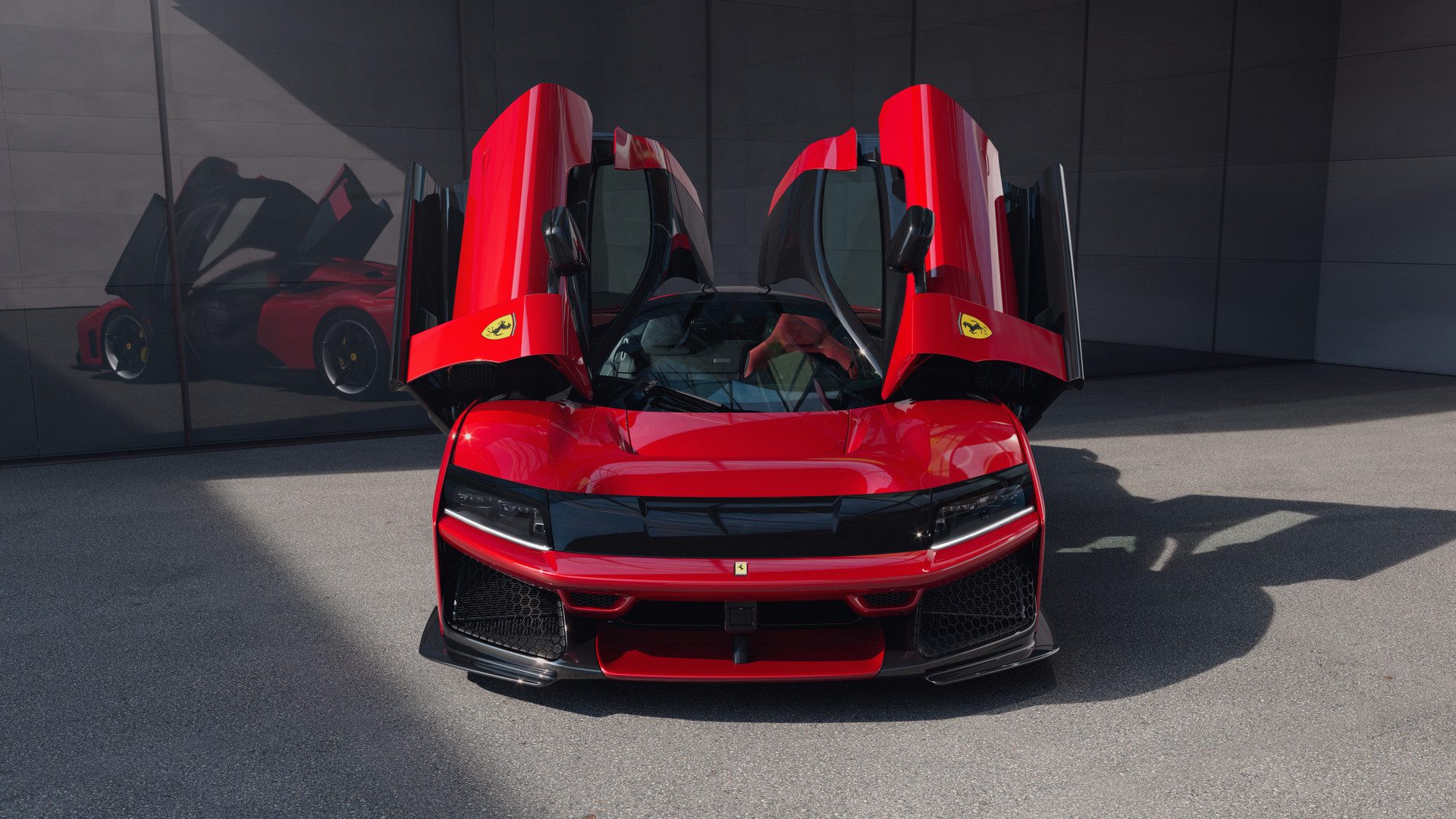
“We also asked the question about whether an electric or plug-in hybrid powertrain was considered, to which we received an emphatic: ‘No, we think that for now, this is the best technical solution’.”
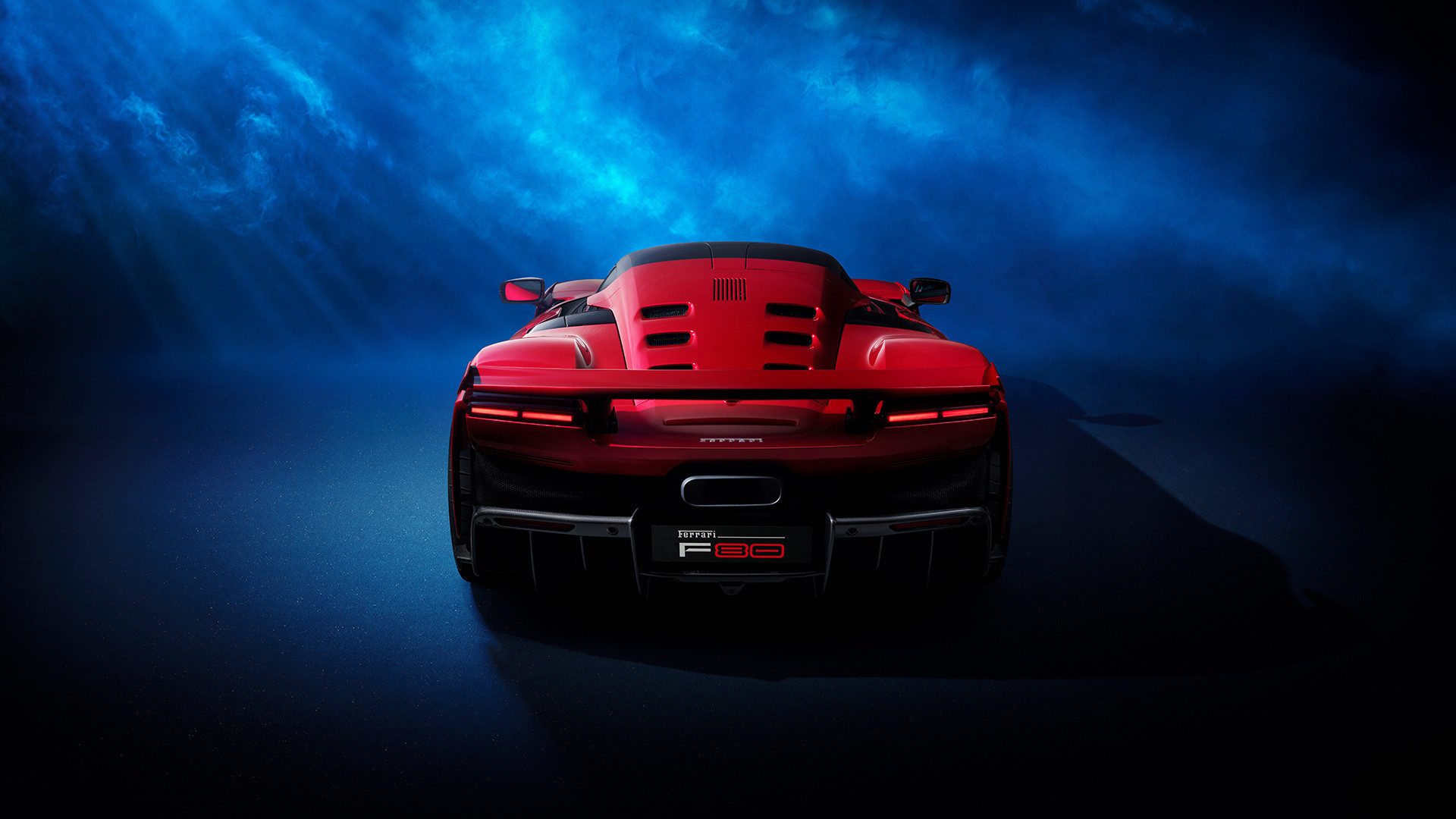
However, the more than $NZ2m price difference in favour of the McLaren is likely to be noted. Not that it seems to have dampened enthusiasm for the F80, all quickly selling to Ferrari’s most dedicated clients.
Evidently the car was ‘hugely oversubscribed’, with the Italian brand having to “manage the many disappointed clients that were unable to secure an allocation”.


